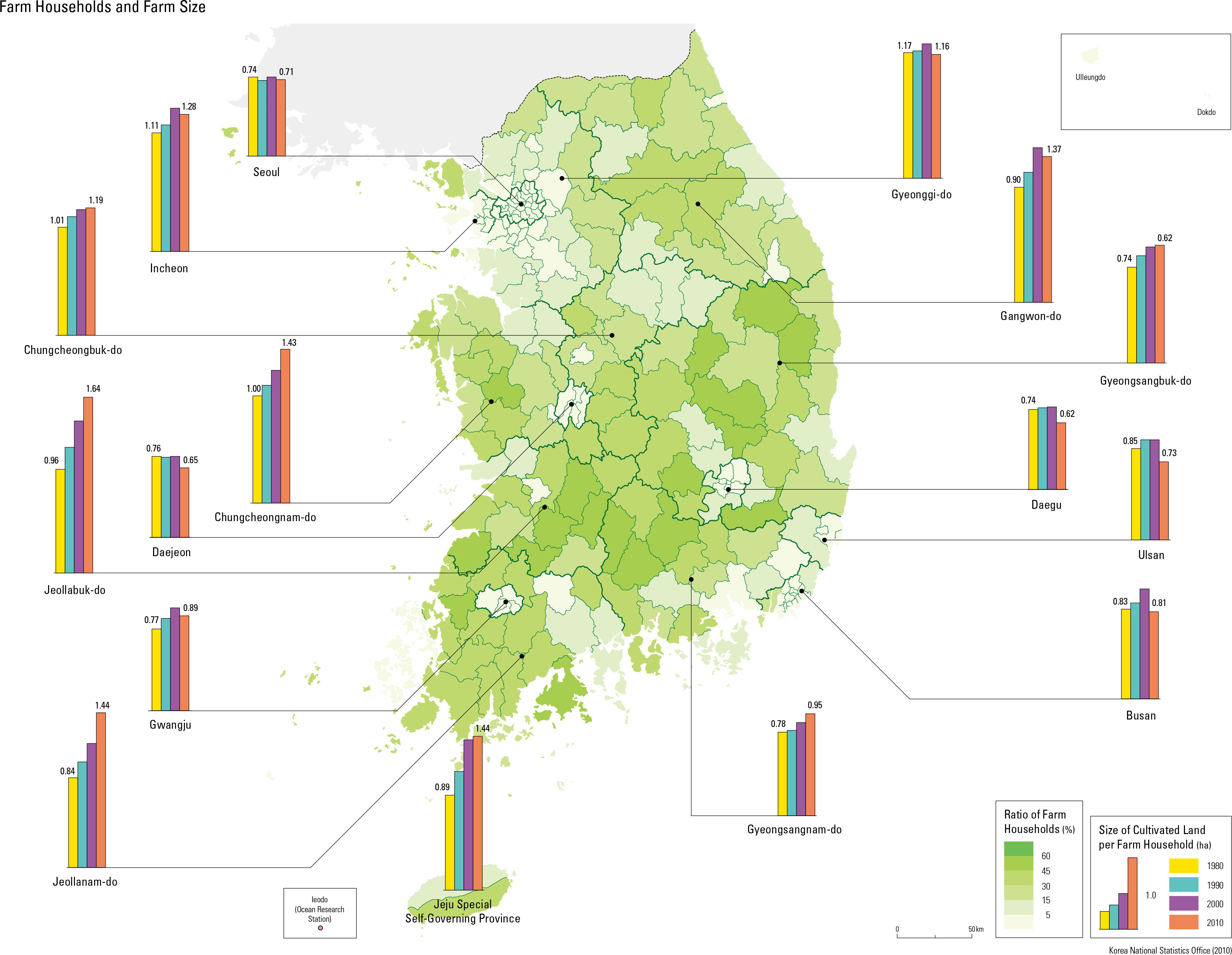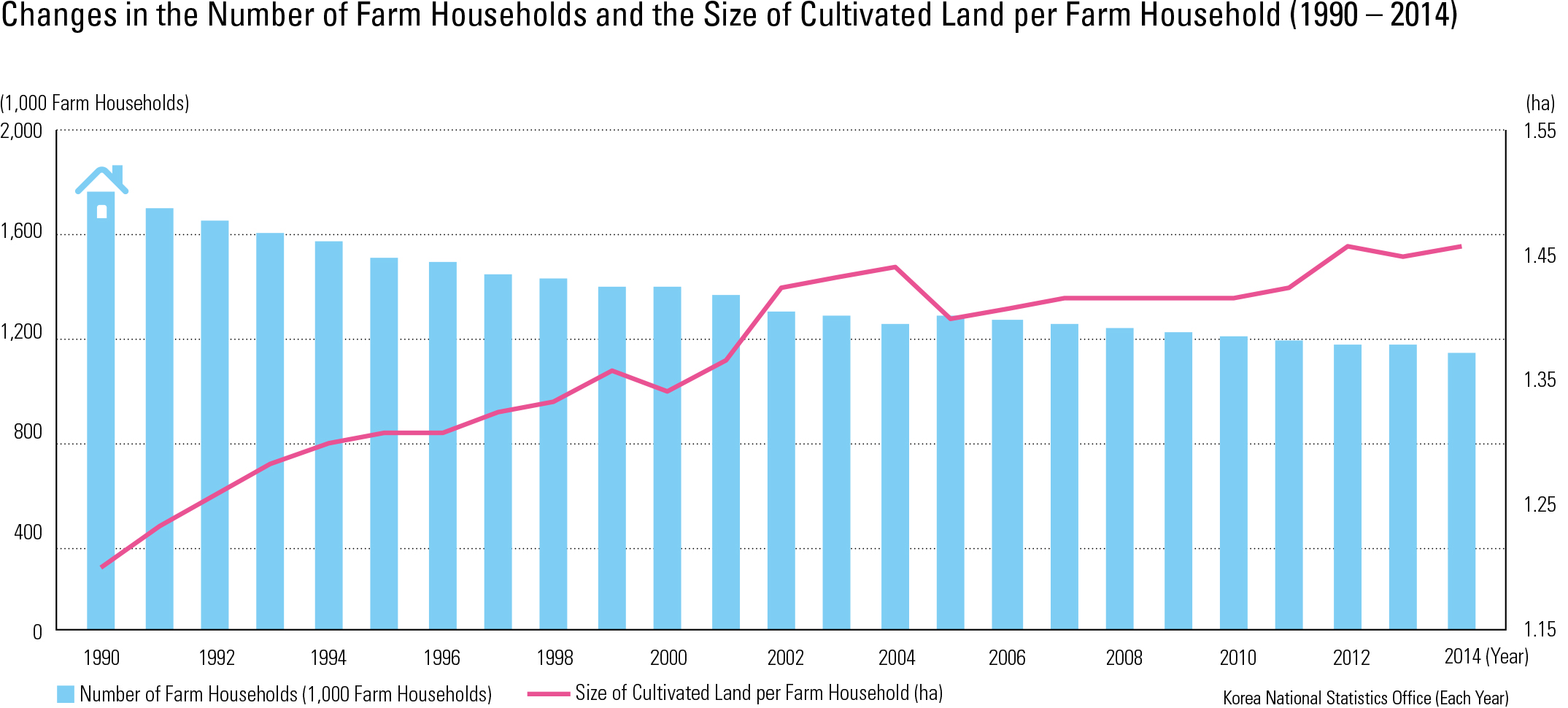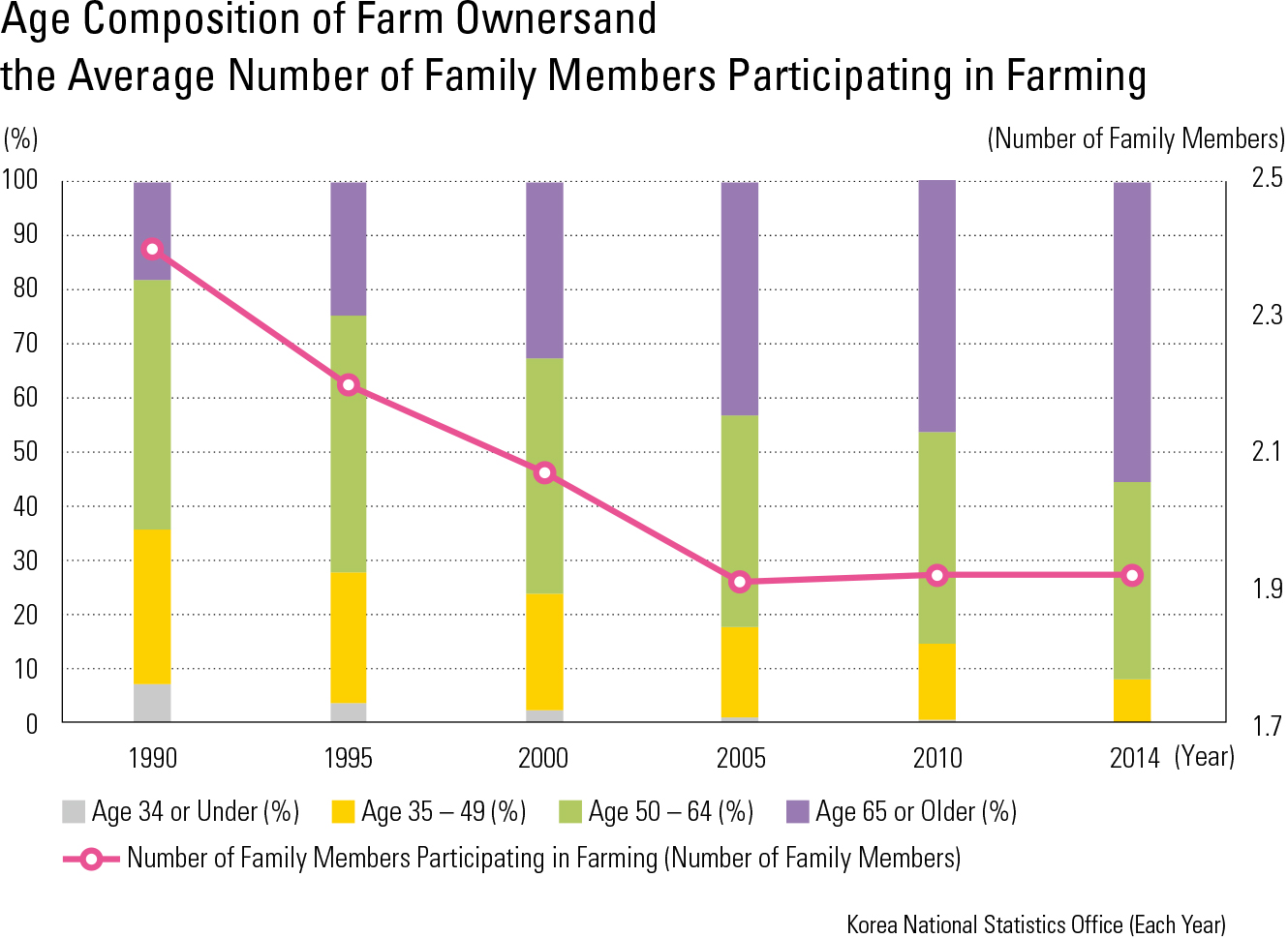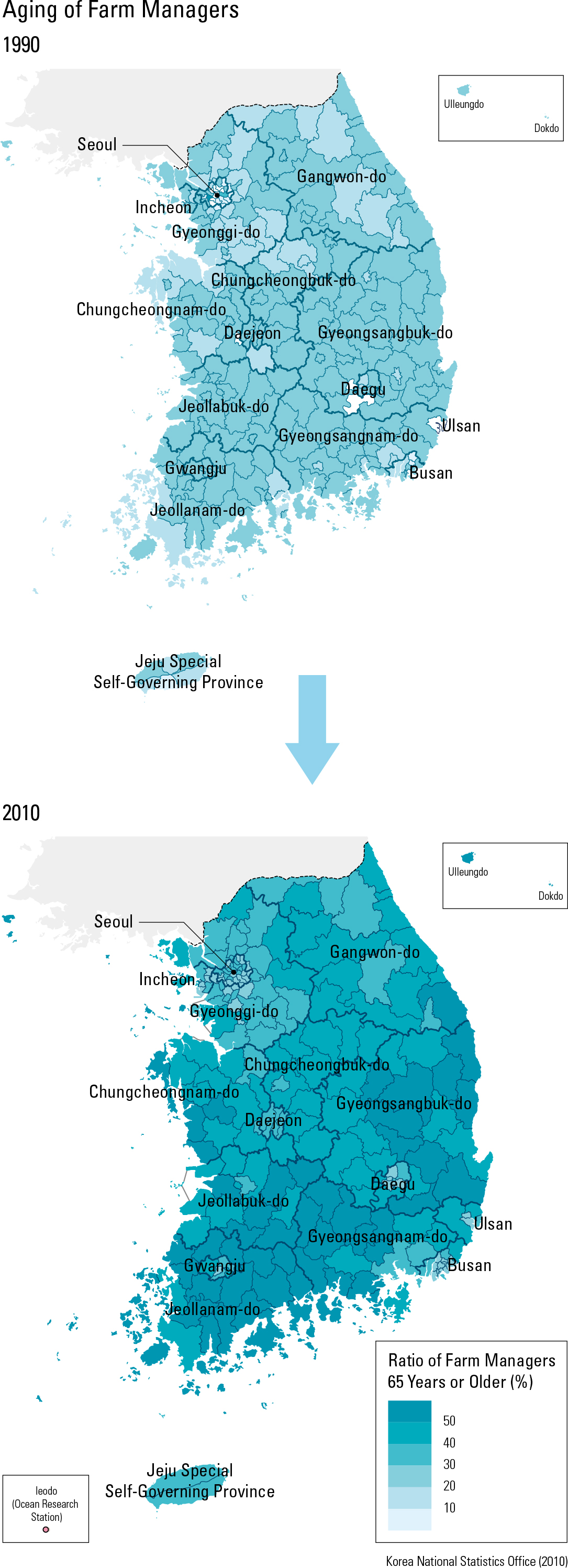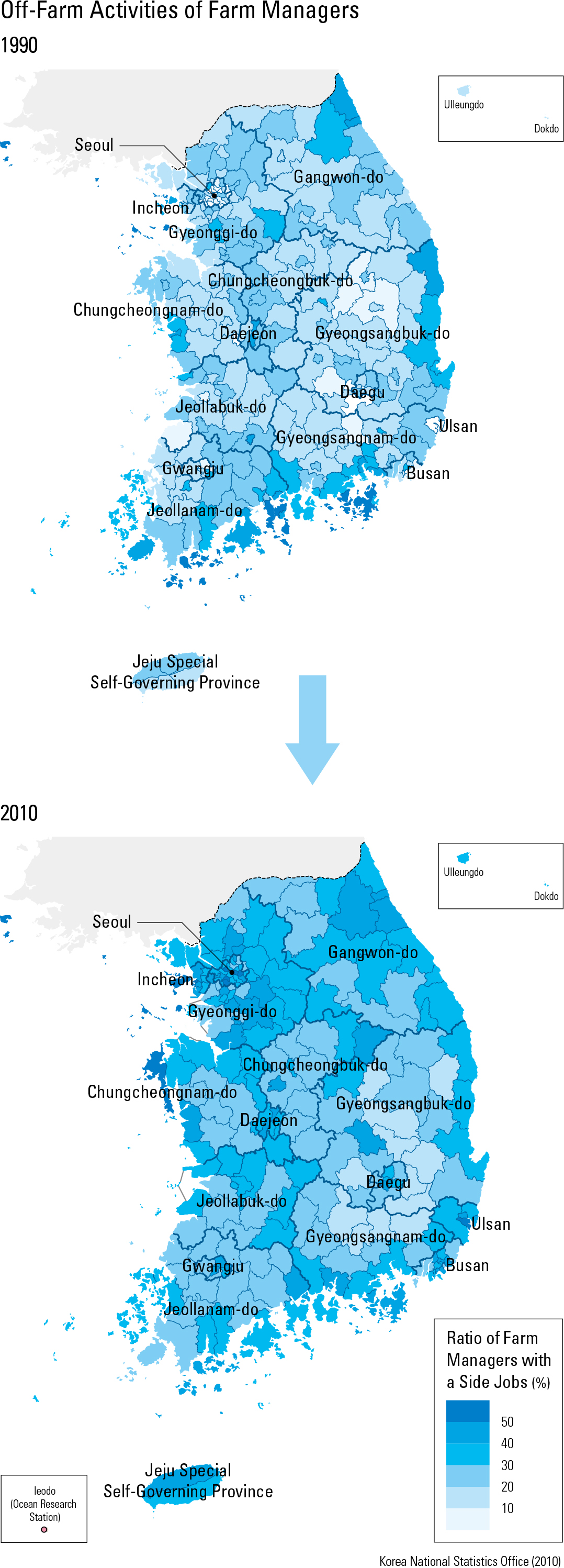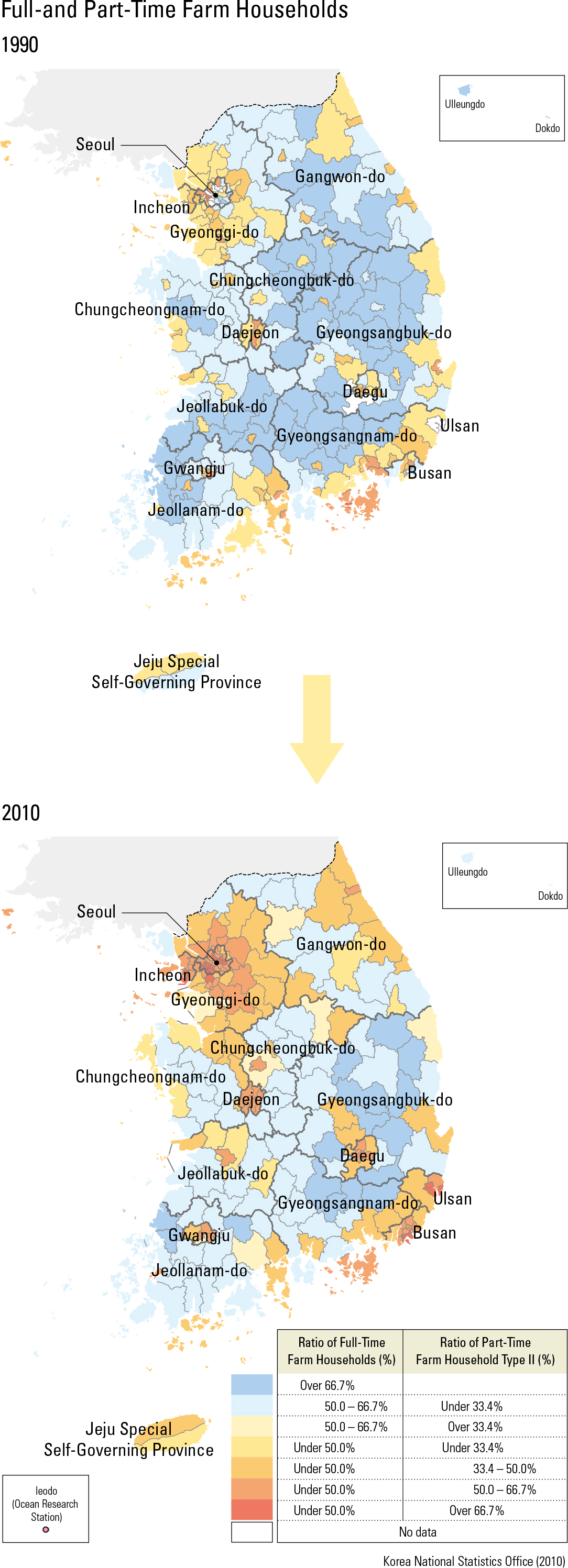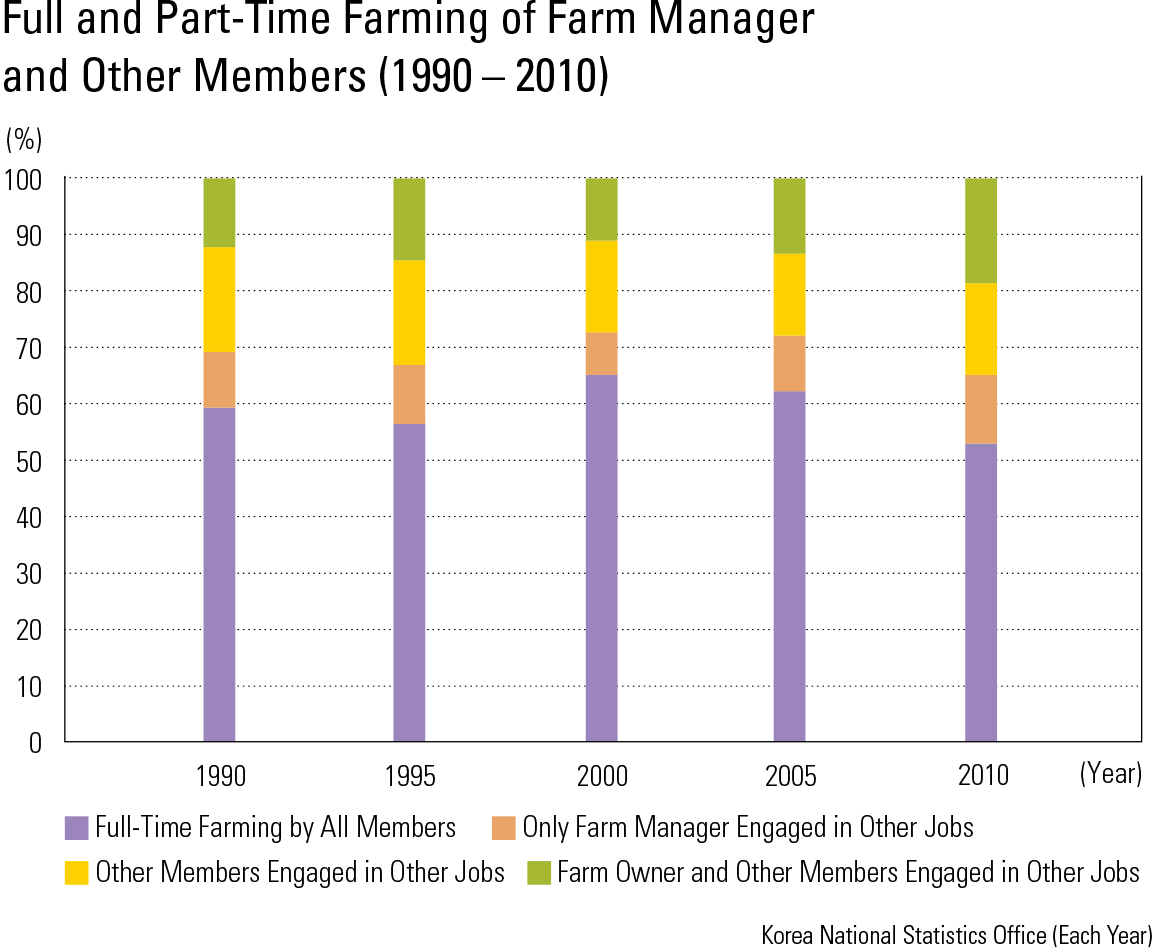English III
The number of farm households has also de- creased continuously, similar to the decrease in agricultural workers, as industrialization has pro- gressed. The total farming households in 1990 was 1.77 million; however, this number declined to 1.12 million in 2014, showing a drastic decline of 36.7%. During the same period, the number of people engaged in agriculture declined by 46.7%, from 4.24 million to 2.26 million people. In fact, the number of people engaged in farming per household declined from 2.4 in 1990 to 1.9 persons in 2014. The average age of farm managers is also increasing. In 2014, the percent of farm managers over age 65 was 55.7%. Most older managers have failed to nd successors for their farm businesses and continue farm work by themselves or with their spouses. From now on, it can be expected that massive farm closures will occur and the decline in farming households will surpass the decline in farm workers. The percent of farming households to total households declined drastically. The average per- centage of farming household for the -si, -gun, and -gu was 32.8% in 1990 but only 17.4% in 2010. Out of a total of 230 -si, -gun, and -gu areas, about 113 places had less than 10% of the households in- volved in farming. On the contrary, 35 places had over 40% of the households involved in farming, but most of them were in Jeollanam-do, Jeolla- buk-do, and Gyeongsangbuk-do. In 2010, over half of the total farming house- holds in 53 places (-si, -gun, and -gu) had farm managers over age 65, compared to only one in 1990. On the other hand, in 2010 there were only 5 places with less than 20% of farm managers over age 65, compared to 179 places in 1990. In areas remote from metropolitan counties, especially Jeol- lanam-do, Jeollabuk-do, and Gyeongsangbuk-do, the aging of farm managers has become clearly noticeable.
page_2 |
